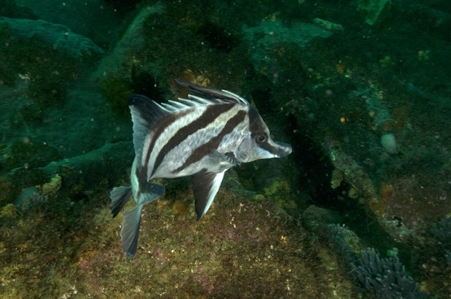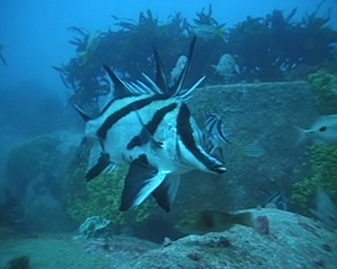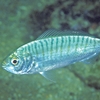General Description
Body moderately deep, compressed, snout almost tubular, dorsal, anal and pelvic fins large; dorsal fin with 10-11 spines, soft dorsal fin forming a distinctly pointed lobe, hind margin concave; anal fin with 3 spines, pectoral-fin base in advance of ventral-fin base, tail slightly forked. Whitish with 2 broad dark angled bands on sides, and a dark band on head from above eye to snout tip. Juveniles with large brownish blotches on body and on dorsal and anal fin. To more than 50 cm.
Biology
Longsnout Boarfish have venomous spines and should be handled with care. They are mostly seen hiding under rocky ledges during the day. They are trawled in low numbers throughout much of their range and are good eating.
Habitat
Rocky reefs and sandy areas in coastal waters and bays, in depths of 3-260 m.
Reefs
Soft substrates
Distribution guide
Southern Australia.
Species Group
Depth
Shallow (1-30 m)
Deep ( > 30 m)
Water Column
Max Size
50 cm
Diet
Carnivore
Commercial Species
Yes
Global Dispersal
Native to Australia
Conservation Status
- DSE Advisory List : Not listed
- EPBC Act 1999 : Not listed
- IUCN Red List : Not listed







